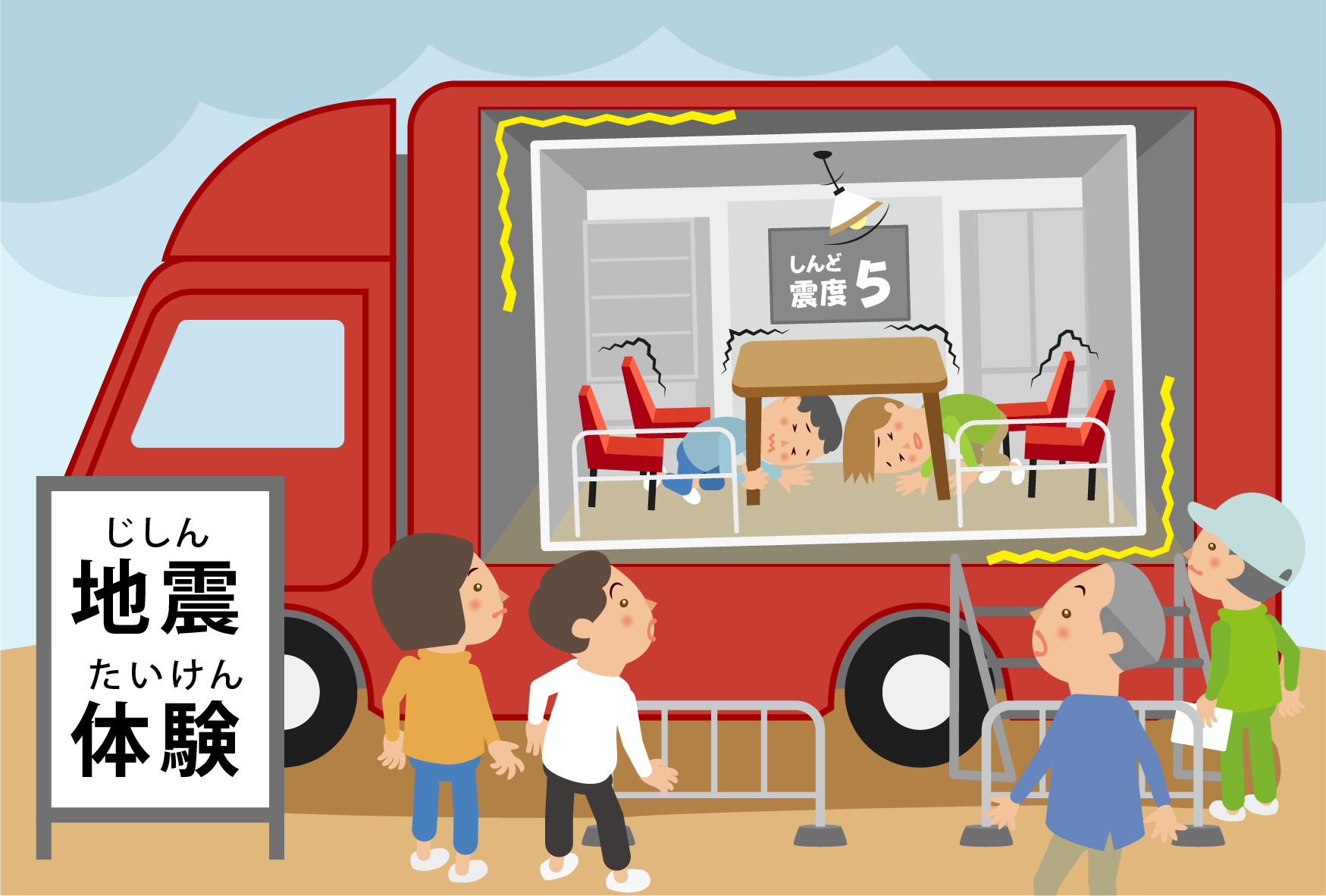Natural Disasters
Preparing for Disasters
You never know when a disaster will occur.
It’s important to always be prepared.
Things to Prepare
When a disaster occurs, electrical, gas and water supplies may be suspended. Food stocks at supermarkets and convenience stores soon run out. It is common for stores to close.
Preparing for a disaster by buying excess food and other supplies in advance is known as bichiku (stockpiling) in Japanese.
Prepare a supply of the items you need for everyday life–a week’s worth if possible, but three days’ worth at least.

Drinks/Food
-
Drinking water: 3 liters per person per day
-
Food: Rice (eg.alpha rice*), cup noodles, canned food, retort food pouches, vegetable juice, nutrition supplement foods (foods that provide simple and easy nutritional value), chocolate, etc.
*Rice that can be eaten just by adding water or hot water

Necessary goods for everyday life
-
Water for general use: store water in large plastic bottles or in the bathtub.
-
Emergency toilet and toilet paper
-
Portable gas stove and gas canisters
-
Flashlight
-
Regular medications
-
Changes of clothes, underwear
-
Portable battery packs/dry cell batteries
Items it would be convenient to have
-
Plastic bags/garbage bags
-
Plastic wrap
-
Pocket heat packs
-
Lighters
-
Tissues/wet wipes
-
Radio
For items that you use or consume frequently, such as food, batteries, plastic wrap, sanitary products, diapers, contact lenses, gas canisters, etc., always buy a little more than you will immediately need, and use each in the order they were bought.
Tokyo Metropolitan Government [Disaster Prevention Information]: Let's Build Daily Stockpiles Leaflet (Japanese/English)
Tokyo Stockpiling Navi (Japanese/English)
What to take to the evacuation center
You may end up in an evacuation center if you are unable to stay at home as a result of a disaster.
Keep the items you would want to take to the evacuation center in an emergency backpack so it’s ready to go at any time.
For details, see the following page:
About Evacuation Center (8 languages)
Preparations in the Home
During an earthquake, furniture can topple over and unsecured objects can fall, causing injury.
Take steps to prepare your home for a disaster.
Furniture
Position furniture such that, in the event of an earthquake:
-
It will not fall on the bed
-
It will not block doors or corridors if it falls
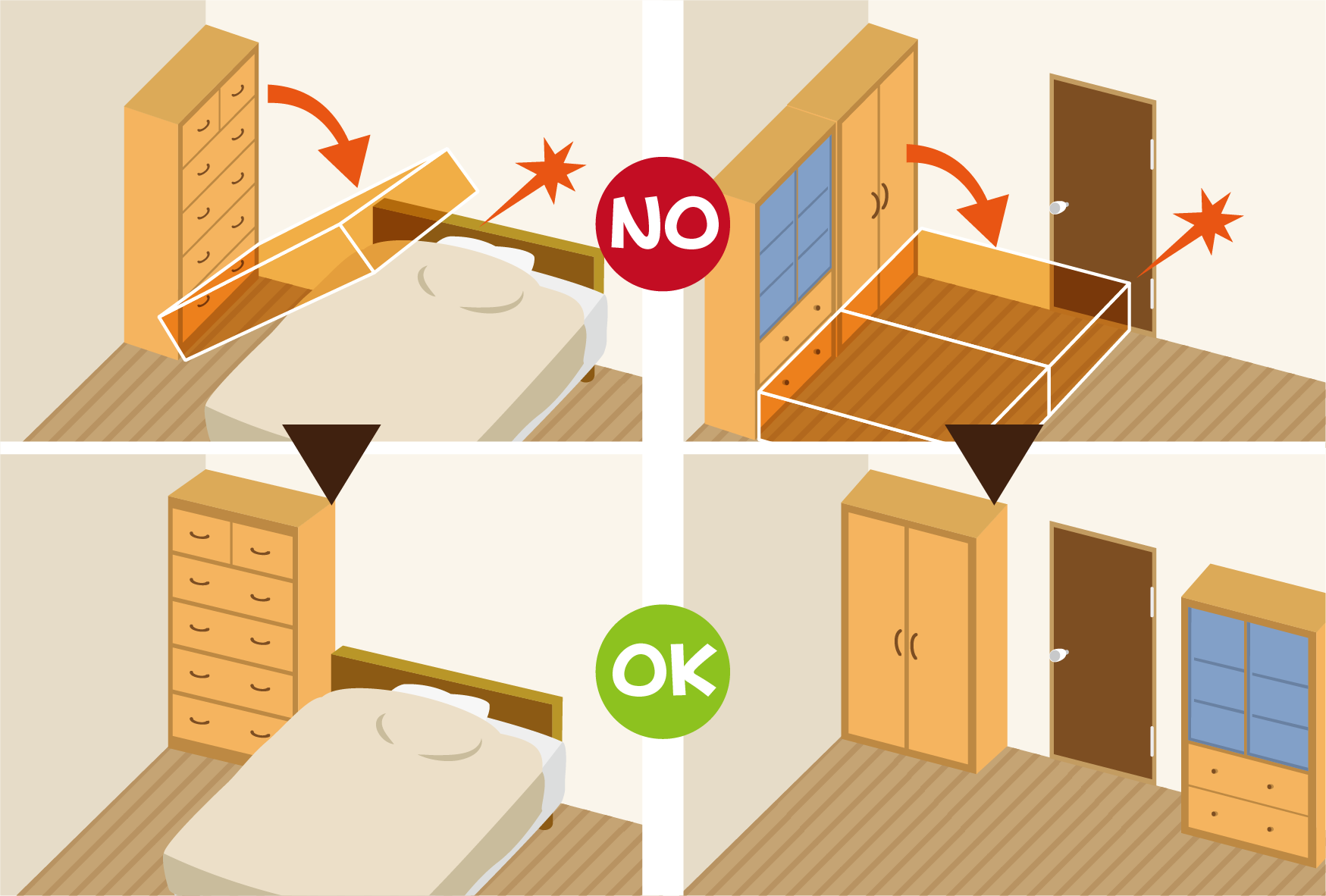
Secure large furniture so it cannot move.
-
Anchor with metal fittings
-
Anchor with tension rods
-
Place on adhesive sheets
-
Anchor with chains
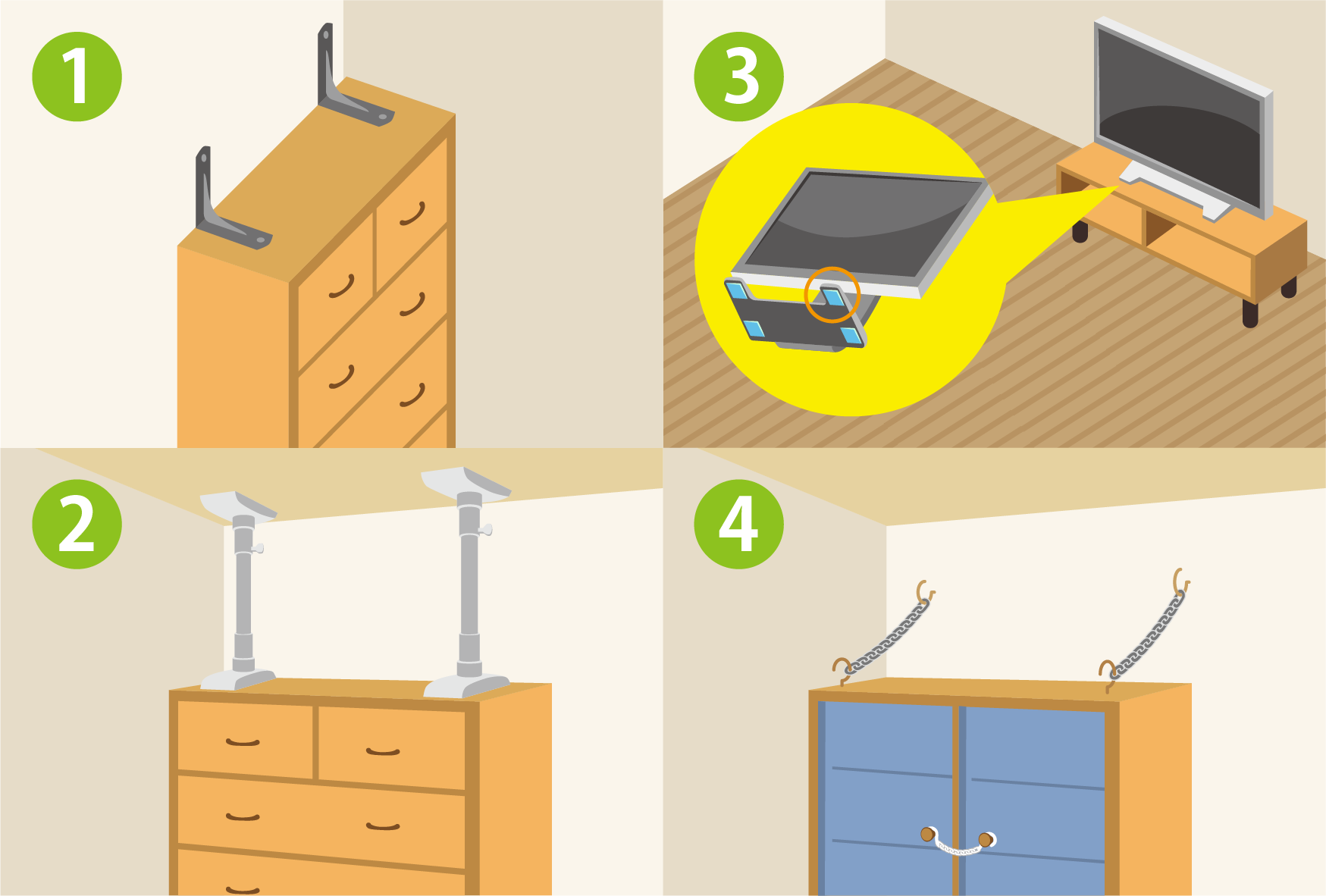
Shelves
-
Place light items towards the top and heavy items below. This will minimize shaking during an earthquake.
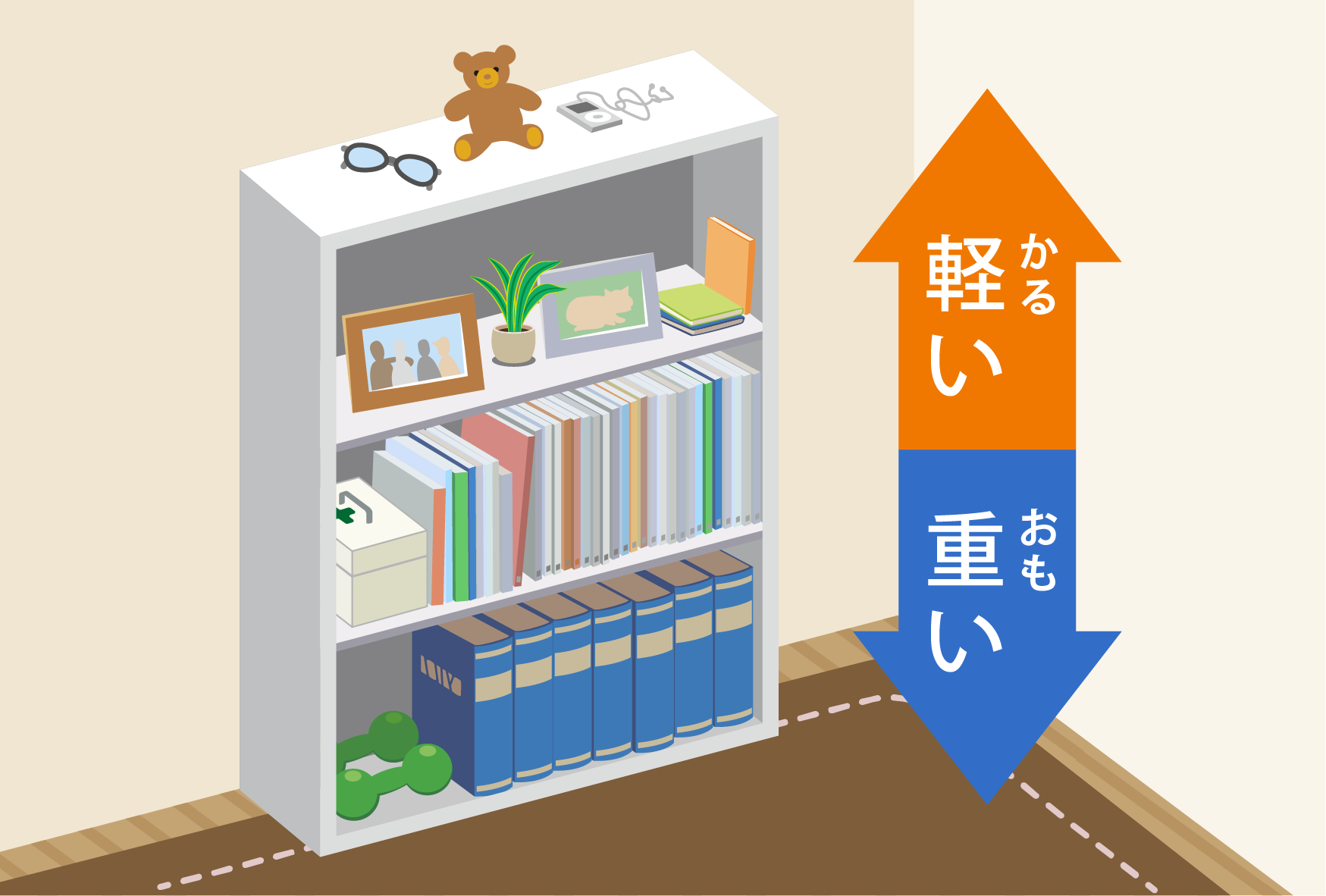
Windows
-
Stick anti-shatter film on windows to prevent glass from spraying if the windows break.

Sleeping area
-
Keep your emergency backpack nearby.
-
Keep slippers or shoes close by so you can flee quickly at any time.
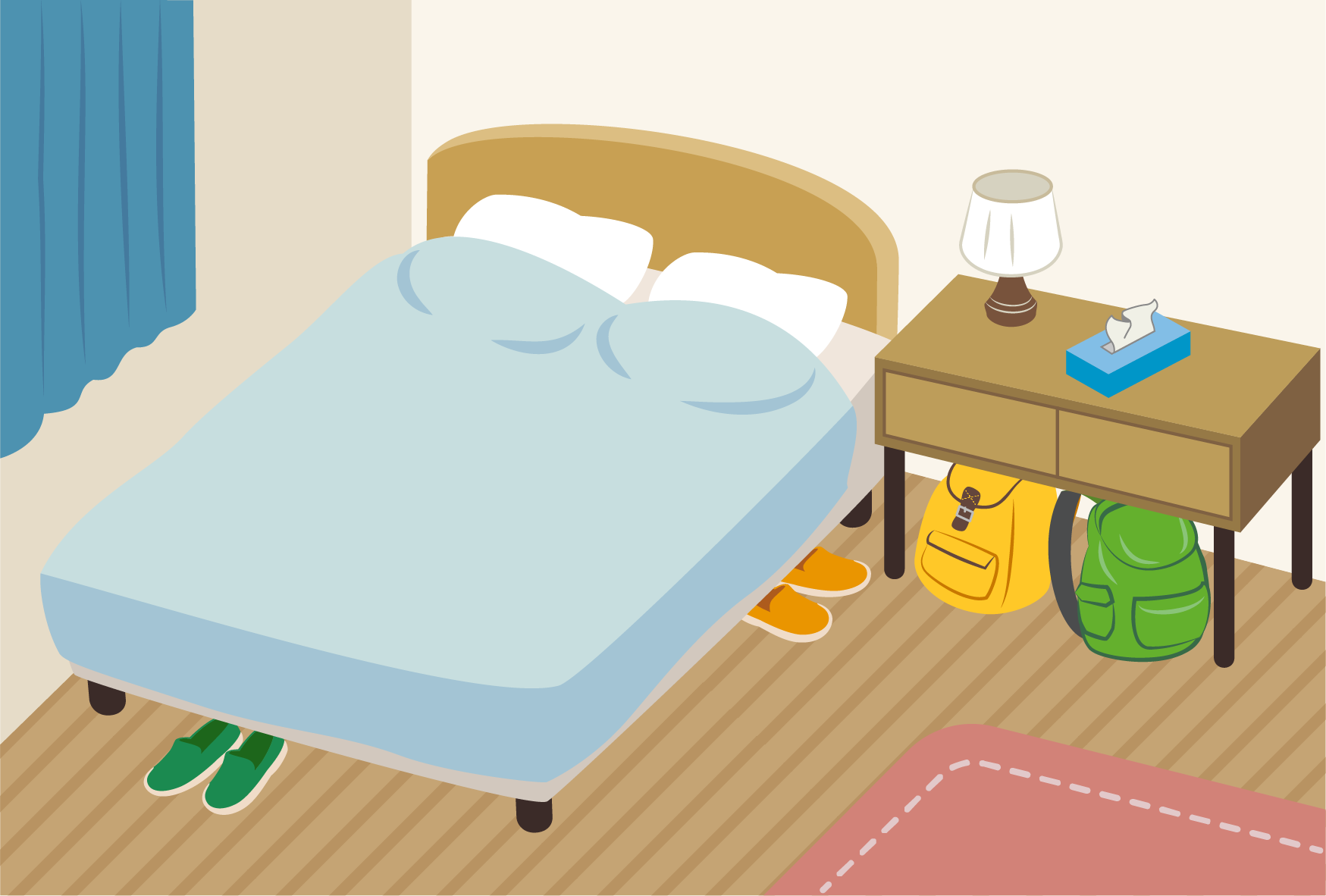
For details, refer to the website below:
NHK Illustrated Home Earthquake Preparations (Japanese)
Things to decide with your family
When a disaster occurs, you may not be able to reach people by phone.
Trains may be suspended and roads may be closed or rendered impassable, preventing free movement.
Make sure to make a plan with members of your family for where to evacuate to and how to contact each other in the event of a disaster.
Evacuation
Check local hazard maps and other resources and decide a place to evacuate to.
There are different hazard maps for flooding, earthquakes, etc.
Decide where to evacuate to in each case.
For details see the following page:
About Flood Hazard Maps (8 languages)
Communication
Decide how the members of your family should notify each other of their condition, whereabouts, etc.
-
Disaster Emergency Message Dial (171):
A phone number that can be used when a disaster has occurred.
Dial 171 and record a message.
Family members and others who know your phone number will be able to listen to the message.
You can practice this on the 1st and 15th of each month.
For details, see the following website: -
Online Disaster Message Board:
A website that can be used when a disaster has occurred.
You can write and save a message to the site.
Family members and others who know your phone number will be able to read the message.NTT East Japan/West Japan Disaster Message Board (web171) (JP/EN/CN/KR)
Column:Disaster Drills
In Japan, towns, schools and companies operate disaster drills.
These events allow you to practice the actions to take during an emergency, including how to evacuate.
You can also experience the kind of shaking you might expect during an earthquake in an earthquake simulation vehicle, learn how to use fire extinguishers and AEDs, and learn how to make calls in an emergency.
If you have the opportunity, it’s a good idea to participate in a local disaster drill.
You can also undergo a learning experience at a Disaster Prevention Center.
Tokyo Fire Department Life Safety Learning Center (Japanese/English)
